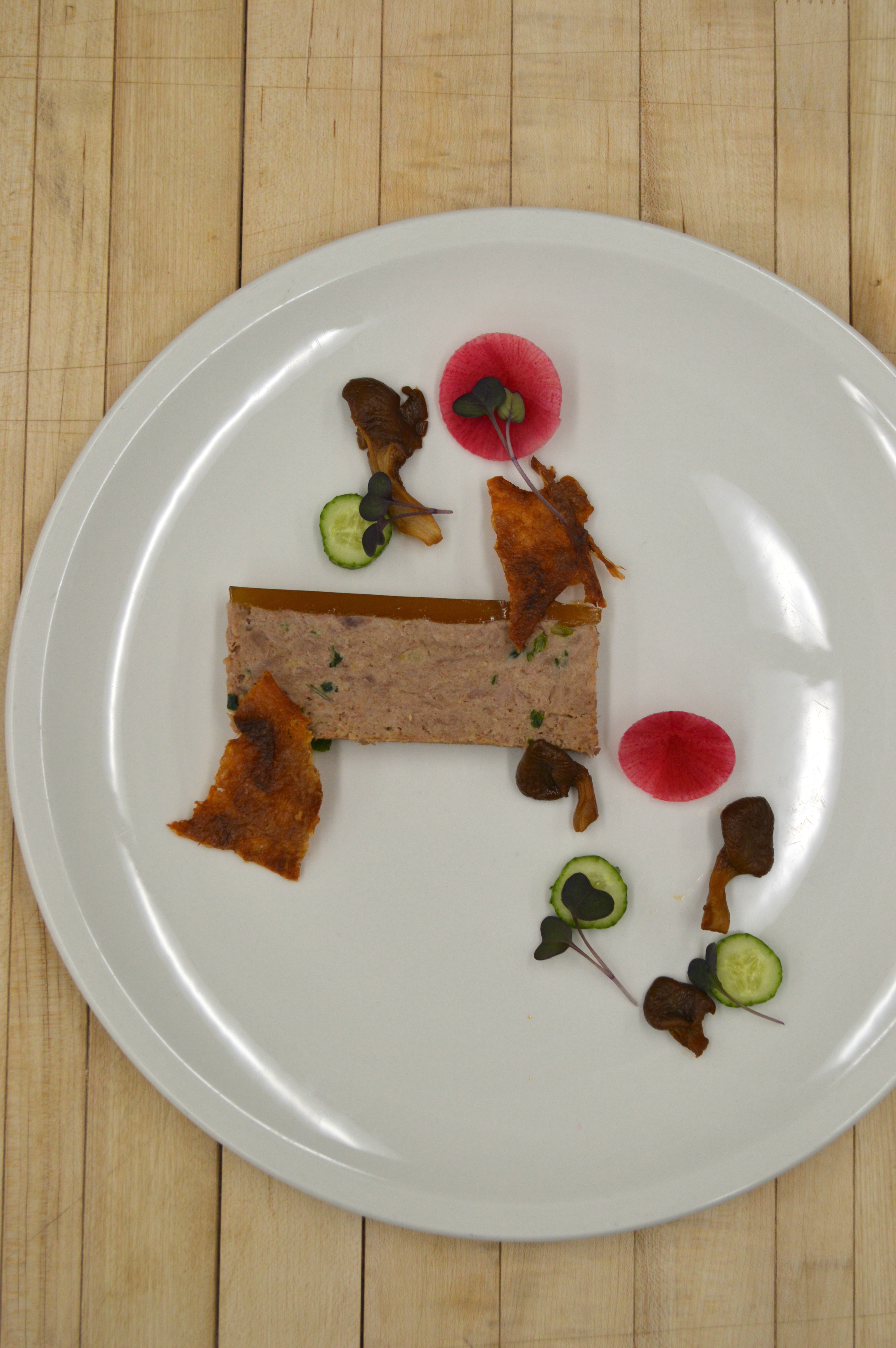
There are a few terrines and pâtés in the Eleven Madison Park cookbook that are capped with gelée. One that especially interested me is rabbit rillette topped with violet mustard gelée. I had only ever seen rillette topped with rendered lard, not a gelatin-rich liquid. Also I had only seen rillette presented in a ramekin, or perhaps shaped into quenelles, or spread on toast; I had never seen it treated more like a terrine, sliced into tidy rectangles. It’s a great example of the finesse that distinguishes these dishes from ones you would get in a bistro or brasserie. I set out to make my own version of terrine de rillette with gelée.
This past week we made a large batch of duck confit flavoured with star anise, orange, ginger, garlic, and scallion. This was processed into rillette. I reserved the uber-rich jus from the bottom of the confit pan to make the gelée.
The Terrine de Rillette
For this first test batch I took some of the warm rillette mixture and pressed it into a 1/6 insert. I put another 1/6 insert on top and gently weighed down the meat to ensure the final slices were perfectly rectangular with clean corners. The pressed terrine de rillette stayed in the fridge overnight to set.
Capping the Rillette with Gelée
As I said above, the gelée cap was to be the rich jus captured from the bottom of the confit tray. It had set firm and sliceable in the fridge, so I knew it already had the gelatin content it needed for this application. I heated the jus and passed it through a coffee filter to make sure it was very clear.
I’ve capped gelatin-bound terrines like headcheese with gelée before, but never fat-bound terrines like rillette. I wondered if pouring the hot gelatin-rich liquid over the rillette would melt some of the rendered fat and spoil the clarity of the gelée. Turns out this isn’t an issue at all.
I scraped any surface fat from the top of the terrine de rillette. I made sure the gelée was warm enough to pour easily, but not boiling-hot. I poured the warm gelée mixture over the rillette, adding a little more than I wanted on the finished product so that I could skim away some and remove what little fat melted and came to the surface. Pouring a small amount of warm liquid over a thoroughly chilled terrine definitely does not cause much melting.
The capped terrine was returned to the fridge to set the gelée.
Cutting the Rillette
I tried a few different knives and techniques like dipping the blade in hot water before each slice. A serrated knife dipped in hot water between slices worked best. My regular French chef’s knife tended to pull the shreds of duck meat out of place, and cold knives tended to tear the gelée.
Accompaniments
I really like this dish because it has a core concept that can be taken in countless different directions. The meat itself could be duck, goose, rabbit, or pork. The gelée could be the natural jus from cooking, or any number of liquids set with gelatin. I’m eager to try some with sour cherry or plum. And of course the variations in accompaniments like pickles, crudité, and crackers are endless.
The duck confit with star anise, ginger, garlic, and scallion, reminded me of Pekin duck, so I set upon cucumber and pickled radish as accompaniments. There are also oyster mushrooms pickled in soy, brown sugar, and rice wine vinegar.
As the “toast” components I crisped the skin from the confit duck legs using the method described in this post.
The actual layout of the dish is inspired by the pork belly course in EMP’s Suckling Pig Served in Four Courses.